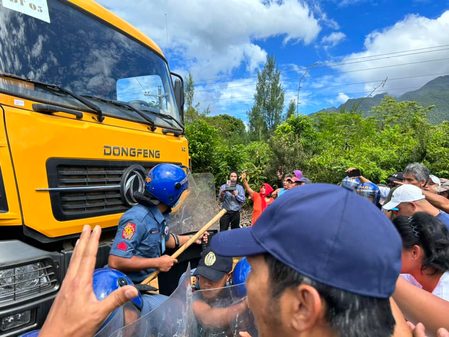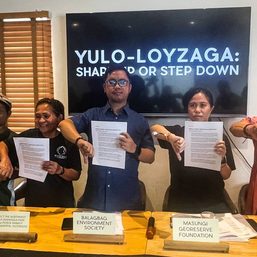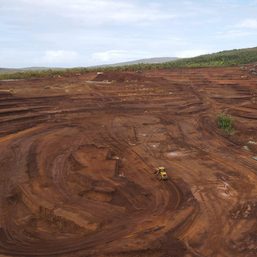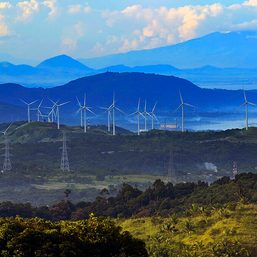SUMMARY
This is AI generated summarization, which may have errors. For context, always refer to the full article.
![[OPINION] An epic sustainability battle in Sibuyan Island](https://www.rappler.com/tachyon/2023/02/sibuyan.jpg)
Sibuyan Island, located in Romblon Province, is deemed the Galapagos of Asia. It is a hotspot of biodiversity and home to various endemic species such as the Philippine Hanging Parrot, the Philippine Pygmy-woodpecker, and the Orange-bellied Flowerpecker. This abundance of Sibuyan is a result of being an isolated island. Additionally, Sibuyan also has one of the densest forests in the world, with Mt. Guiting-Guiting in its premises, the highest peak in Romblon.
Aside from the island’s rich biodiversity, it also houses an abundance of nickel and other metals, which has attracted mining corporations. As early as June 1972, the government has allowed Sta. Barbara Development Corporation (STABADECO) to conduct mining exploration in Sibuyan. The corporation eventually passed this on to Altai Philippines Mining Corporation (APMC).
Local opposition to mining
Initially, the residents of Sibuyan welcomed “responsible mineral resource exploration, development, and utilization,” as they believed this would create jobs for the locals. Apparently, this endorsement was tainted with deception as it was not brought up with other LGU officials. When it was discussed amongst everyone, they eventually revoked their endorsement.
The push-back of the residents and the local government has allowed them space and time free of metallic mining in their area. However, on September 2021, DENR lifted the cease and desist against APMC, giving them the liberty to mine in Sibuyan yet again. By July 2022, AMPC’s program for Sibuyan was approved by DENR. Then in December 2022, the DENR-MGB Central Office allowed APMC to bulk test 50,000 metric tons of ore in the island.
With this recent development, the residents of Sibuyan continued to fight back. According to Elizabeth Ibañez, coordinator of Sibuyanons Against Mining, “We are seeing that our island is being destroyed, but no one is responding. There is still no positive action being taken by the concerned government agencies.”
She asserted that almost everyone in the island does not support mining in their area as it will negatively impact the environment and their livelihoods. This is especially true for those in Barangays España and Taclobo in San Fernando, because their villages will house mine pits and mining facilities. The locations for the project are also vulnerable to landslides. Not only do the projects affect villages, it also affects four major rivers in Sibuyan, in turn impacting irrigation as well as the buffer of Mt. Guiting-Guiting.
LGUs of San Fernando, Cajidiocan, and Magdiwang also released a joint resolution opposing large-scale metallic mining in the island. They have even appealed to President Ferdinand Marcos Jr. to declare their island free from large-scale metallic mining. Unfortunately, this was met with silence.
The barricade by communities
Due to the lack of response from the government and the sudden escalation of mining in the area, Sibuyan residents took action to protect their home on January 26, 2023. They formed a human barricade to block APMC mining trucks from transporting the nickel ore they had extracted. While in the barricade, they asked the people from APMC for the official documents needed for the exploration, but they were only shown digital copies. Despite the lack of true copies, the police disposed of the human barricade, resulting in two injured people. In a video posted by groups Alyansa Tigil Mina and Living Laudato Si’, the police are seen violently pushing against Sibuyan residents. Behind this scene is a truck waiting for the dispersal so it can pass through.
As tensions ran high, DENR finally obliged, ordering the APMC to stop the transportation of nickel ore as well as the construction of a causeway. DENR ordered Romblon’s LGU as well to conduct an investigation into APMC after alleged damage of seagrass and the illegal cutting of trees. APMC also stated that it will stop exploration as they will cooperate with authorities to address concerns.
While this is an undeniable victory for the Sibuyanons, they also recognize that this does not mean the fight is over. In fact, there is a long way to go. In an interview with John Nery, Rodne Galicha, the Executive Director of Living Laudato Si, mentioned that they were continuing with the barricade because, despite the halt of the transport of nickel ore and the construction of a causeway, APMC still holds an active exploration permit, which means that they can return again to continue with their exploration.
We believe that the residents must stay vigilant and cautious as Galicha stated, but we also recognize the win that the Sibuyanons have earned.
Galicha even mentioned that the support for the barricade was tangible given the amount of people going every day, and the amount of financial support they receive from OFWs to sustain it. This shows how far our care for our community can take us. Sibuyan’s case also shows that collective action can really transform a circumstance. In this case, their courage and persistence to stand their ground and make a human barricade has brought them a victory.
Sibuyan residents also exhibit how deep people’s concern for their environment can go. While residents are opposing mining operations because it affects their livelihoods, they also fear for the biodiversity of their island, including the celebrated Mt. Guiting-Guiting. They are also aware of how this damage will exacerbate climate vulnerabilities, since a part of the area where APMC was mining is prone to landslides and another part is prone to flooding.
Lessons from the Sibuyan battle
We must learn from the Sibuyanons, but we should also stand with them, because the fight to protect one’s home is always worth it — whether that home be a village, a mountain, an island, or the entire planet.
We echo the official statement of the Manila Observatory on this controversy:
“The Manila Observatory stands in solidarity with the residents of Sibuyan Island and other allies including the Alyansa Tigil Mina and the Aksyon Klima on this issue. It condemns the destructive actions of AMPC, and calls for the revocation of the MPSA in Sibuyan.”
Large-scale mining is already a destructive activity in itself. Mining in a small island such as Sibuyan is worse. It will inevitably lead to the destruction of the island – it will denude its forests, contaminate its rivers, and heavily disrupt the lives and futures of those who live there. Known as the Galapagos of Asia because of the many marine organisms which have found their home in the waters surrounding the island, mining will lead to the degradation of the quality of the waters and the toxicity of the land. The climate crisis will only worsen these adverse impacts on the lives of our people.
We stand with Sibuyan! No to mining in Romblon! No to mining in small islands and other vulnerable places! – Rappler.com
Tony La Viña teaches law and is former dean of the Ateneo School of Government.
Bernardine de Belen is a researcher of Manila Observatory.
Add a comment
How does this make you feel?





















There are no comments yet. Add your comment to start the conversation.